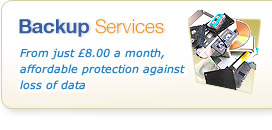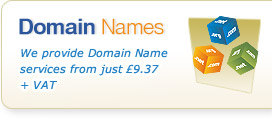Fibre or No Fibre? Why can't I have fibre?
9th January 2013
Fibre Broadband. It's fast, it's more reliable than traditional broadband and it's something many businesses want. Sadly availability of this is limited and not yet available to most businesses. We're regularly asked why this is - here's a quick guide to Fibre.
Part 1 - Your Local Phone Exchange
All phone lines go via a Phone Exchange. These are run by a section of BT, no matter who your phone provider is (apart from a few unusual cases). So whether you pay VPW for Business Telephone Lines or BT, you'll still go via this Phone Exchange.
This exchange has to be enabled for Fibre (which means BT have put in connectivity that lets the vast potential amounts of bandwidth used by Fibre get from your local phone exchange back to your Broadband Provider (like us!). If this isn't enabled, you'll not get Fibre Broadband. BT are rolling out Fibre Services to different exchange areas in a progressive manner, and coverage improves every month.
Sometimes your local Exchange is enabled "via" another Exchange - this typically happens in some cases where there may be lots of smaller "local" exchanges nearby ultimately served by one larger one.
Part 2 - Your Local Cabinet (known as a PCP)
Your phone line is a physical cable (or series of cables) that runs from your premises back to the Local Phone Exchange. Normally, this first runs between your premises and the first BT owned cabinet. This cabinet also has to be Fibre Enabled. They're often recognisable as big green cabinets in the street.
There are 2 types of Fibre. "FTTC" and "FTTP" - FTTC - the most common being rolled out (and the one we're discussing here) stands for "Fibre to the Cabinet" - and means exactly that. BT run fibre to your cabinet (well almost - we'll get to that), and then your premises is served still by copper - but because the length of that copper line is really short between your premises and the cabinet, the speed offered is huge (since it normally travels a couple hundred meters and not several kilometres).
When a "cabinet" is "enabled" this almost always means that a new cabinet is put nearby (often right next to it - they're often recognisable because they're taller - and because you'll often see BT Openreach people there for a week getting it ready). Premises are generally grouped up and served by individual cabinets. Sometimes even in the same street, 2 premises can be connected to different cabinets for all kinds of reasons - so just because the neighbouring office can get fibre sadly doesn't mean you can.
To get fibre, your Cabinet has to be enabled as well as the Local Exchange.
Part 3 - Your "Local Loop" to the Premises
This is the final big hurdle. Sometimes your premise may be served by aluminium, rather than copper wiring (it's reasonably rare but there are areas where this is still an issue). If you've got aluminium, the chances are your premises won't get Fibre Broadband, although BT have actively been working to replace this in some areas with traditional copper.
Assuming you're on copper, you're almost ready to get Fibre if you've also got an enabled Exchange and an enabled Cabinet.
Part 4 - Odds and Sods
There are a few other reasons you might not get Fibre:
- The Cabinet has reached capacity - some cabinets are pretty small and have limited slots to connect you - or limited cables to connect between the normal cabinet and the fibre one - if one of these runs out, you might have to wait, or just be unable to get Fibre.
- Your phone line has some unusual service on it preventing installation - this is normally fixed by getting a new Business Line installed to use just for Broadband.
Part 5 - Other types of "Fibre Broadband"
We've discussed above the most common type of Broadband that is called "Fibre Broadband" - known as FTTC (Fibre To The Cabinet) - however it isn't really fibre in the true sense since no fibre comes to your actual premises.
It's also commonly believed that Virgin Media offer "Fibre Broadband" - actually for anything but things like Leased Lines, they also don't. Like the BT FTTC Service, it is "Fibre to the Cabinet" - and then with Virgin Media, just coaxial cable (like your old TV aerial) to your premises.
The other type of Fibre rolled out by BT for normal broadband is called FTTP (Fibre to the Premises) - as the name suggests, this really is Fibre right to your door. This is a very limited roll out. We're lucky in that Exeter, Devon (where we're based!) happens to be one of the pilot areas for FTTP Broadband. You still have to pay for a normal phone line too, but your broadband part doesn't use it and is real fibre. This offers even better speeds - up to 330 meg in theory at present (but will be more as BT push this further).
Part 6 - How BT fits into this, and the BT Infinity Thing
You'll notice that BT is mentioned a lot. We're often asked then are we just reselling BT's Broadband. It's a common question but a bit difficult to explain at times.
Essentially there are different parts of BT. There's BT Retail - they're the ones who have TV adverts, that you see and hear a lot of. They're nothing to do with this (we'll come back to that!).
Then there is BT Openreach - this is the part of BT that physically installs lines and makes the physical, national network work. Everyone (except a few select cases like Virgin Media) use BT Openreach to install lines as they are the only ones allowed to do so. We're no different here.
Having installed a line, BT Openreach then rent the lines to providers like us. They also rent lines to BT's Wholesale Arm, BT Wholesale, and BT's retail arm "BT Retail". It's done this way, and we're all charged the same amount for the same lines. That's because it was mandated this should be the case.
BT Wholesale provide extra services that most providers then use - while BT Openreach provide those physical line services. Then other companies rent those services from one or both, and sometimes they then have resellers and partners who rent again. This is the same for everyone, but the style of service, the capabilities, features and so on vary since everyone chooses.
The BT Infinity Connection
Many people think that Fibre means "BT Infinity" - but that's not true. BT Infinity is just the same that BT Retail has given to its Fibre Broadband options. We just call ours "Fibre Broadband for Small Business", although "VPW Ultra Infinity Super Broadband" was an option.
When you take a Fibre service from us, it has nothing to do with BT Retail, does use a BT FTTC line (in the same way if you used Sky Fibre Broadband at home, they also use BT FTTC to get this to your house) - but in both cases what happens next, the bandwidth available and so on varies massively as does the quality of service you get.
Why would I want Fibre anyhow?
A good question... and here's a few reasons:
- Fibre can offer up to 75-80meg speeds (FTTC) or 300-330meg (FTTP)
- Areas that have poor speeds with standard broadband can particularly benefit
- Less of your line is copper based, so there's less inteference and more reliability
- You can get much better upload speeds - so sending data and files etc is much faster
Finishing Up
Hopefully this primer has helped you understand what determines if you can get Fibre Broadband, and why sometimes it might sound like it's possible but just not be possible.
Want to find out if we can give you better Broadband? Call us on 01392 950 950 - we'd be happy to help your business.
Interested in our broadband services? Check out these pages:
-- Fibre Broadband For Business
-- Standard Small Business Broadband
-- Bonded and Premium Broadband for Small Business




